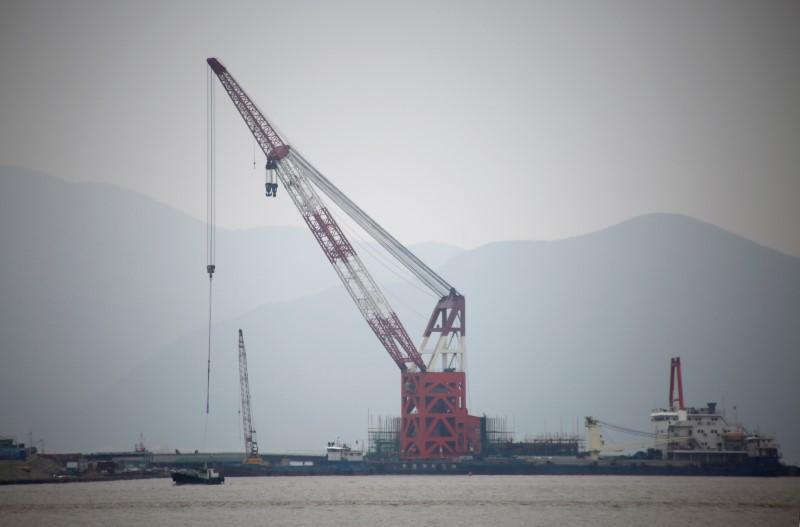 © Reuters. Crude oil terminal under construction is pictured off Ningbo Zhoushan port in Zhejiang
© Reuters. Crude oil terminal under construction is pictured off Ningbo Zhoushan port in ZhejiangBy Henning Gloystein
SINGAPORE (Reuters) – Oil prices rose on Thursday, lifted by a surprise draw on inventories as well as ongoing dollar weakness which makes oil cheaper in global markets and potentially spurs demand.
U.S. West Texas Intermediate (WTI) crude futures were at $65.27 a barrel at 0122 GMT, up 10 cents, or 0.2 percent, from their previous close.
futures were at $69.53 per barrel, up 6 cents, or 0.1 percent.
Both benchmarks are hovering just below their highest levels since early February, having risen around 10 percent from March lows.
Some support for crude futures came from currency markets, where the dollar fell as Federal Reserve officials stuck to their view of three rate increases for 2018, even as they delivered an expected quarter point rate hike.
In oil markets, U.S. crude inventories fell 2.6 million barrels in the week to March 16, to 428.31 million barrels, the Energy Information Administration (EIA) said late on Wednesday.
“Oil … had a big session overnight although this wasn’t just a function of the interest rate move. Inventory data for last week showed a surprise crude draw as well as significant drawdowns in both gasoline and distillates inventories,” said William O’Loughlin, investment analyst at Australia’s Rivkin Securities.
Dutch bank ING said the drawdown in U.S. crude inventories was down to a fall in imports by around 500,000 barrels per day (bpd) to an average 7.08 million bpd last week, and a rise in exports by 86,000 bpd to an average 1.57 million bpd. Also, refinery utilization rates rose above 90 percent for the first time since early February.
Analysts said Middle East tensions this week were also supporting oil prices.
“Washington… looks increasingly likely to re-introduce sanctions against Iran, something that could hurt its ability to produce and export crude oil,” said Ole Hansen, head of commodity strategy at Denmark’s Saxo Bank.
Further supporting oil prices has been supply restraint led by the Organization of the Petroleum Exporting Countries (OPEC) and Russia, which started in 2017 and is scheduled to go on for the rest of 2018.
OPEC said on Wednesday that the cuts were close to having the desired effect of bringing down global inventories to five year averages, although it gave little detail.
The overall bullish mood is being somewhat tempered by U.S. crude production, which climbed to a fresh record of 10.4 million barrels per day (bpd) last week, putting the United States ahead of top exporter Saudi Arabia and within reach of Russia’s 11 million bpd.
Fusion Media or anyone involved with Fusion Media will not accept any liability for loss or damage as a result of reliance on the information including data, quotes, charts and buy/sell signals contained within this website. Please be fully informed regarding the risks and costs associated with trading the financial markets, it is one of the riskiest investment forms possible.
Source: Investing.com




























